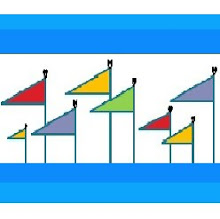
Few would deny that Disney’s Alice in Wonderland fails on a lot of levels: It lacks emotion, it’s episodic, the story has no goal…
And yet…
It’s my favorite Disney film. It haunted my dreams way back in my sixties childhood when Disney animation was a rare treat (I think small children can relate to Alice’s fear of being lost in Tulgey Wood, and that—if you experience this film at a young age—the movie retains a deep-rooted sense of peril that’s lost on those who initially view it as an adult.) Time has been kind to this movie: Watching it today, all the narrative problems still exist, but the film amazes, dazzles and completely succeeds at conjuring a cohesive, unforgettable world unlike anything else in the history of cinema.
Visually, it’s a masterpiece that looks fresher and more daring with each passing decade. It playfully weaves nearly two dozen songs—many of them mere fragments—into its colorful soundtrack. It’s not sappy or preachy. It actually sticks fairly close to the book’s storyline. It substitutes visual puns for Lewis Carroll’s wordplay, and mostly succeeds. And, after all the criticism fired at the movie when it debuted in the fifties, no other studio has created a more successful adaptation. I rather liked the TV movie a few years back featuring Martin Short, Christopher Lloyd, Gene Wilder and Peter Ustinov (it’s on iTunes), but it had its own share of pacing problems and took just as many liberties with the book. We’ll see how Tim Burton fares next year—I’m looking forward to it.
Let’s look at the negatives of Disney’s version: The ever-annoyed Alice often seems bratty and arrogant, and she learns nothing from the adventure. The journey has no compelling goal. The fragmented plot is episodic to a ridiculous extreme: Whole sequences can be removed without making any noticeable difference. The music, while generally terrific, frequently becomes brash and intrusive, particularly when it’s used to emphasize gags.
So, what does the movie offer to make it worthwhile? Sheer, incredible visual wonderment. Fantastic backgrounds and amazing use of light and color from the minds of Mary Blair and Claude Coats. Memorable character designs. Terrific animation.
Plus, it contains The Awesome Sequence: One long, perfect chain of scenes—The Cheshire Cat, The Tea Party and Tulgey Wood—that I’d rate as one of the most brilliant twenty minutes of film in Disney’s history: Genius designs, great dialogue and pacing, big laughs, craziest moments and—for once—Alice displays some genuine concern about being lost in Weirdsville. During the song Very Good Advice, I love the fact that the forest animals don’t help Alice; They simply sob themselves into non-existence. Unexpected and unique. If only the whole film clicked on the level of these scenes…
The Cheshire Cat, of course, is this movie’s big gift to pop culture. Creepy, funny, mysterious and odd, he turns out to be a hilarious S.O.B. who sets Alice up for disaster for his own amusement—thus joining Wendy-hating Tinkerbell as a beloved Disney character who tries to arrange the heroine’s execution!
And, on a completely different note, this movie inspired one of the best dark rides in any Disney park. But that’s another post.
So here’s a toast to Alice in Wonderland, the problem movie that continues to delight. Flaws and all, it deserves to be called a classic.


No comments:
Post a Comment